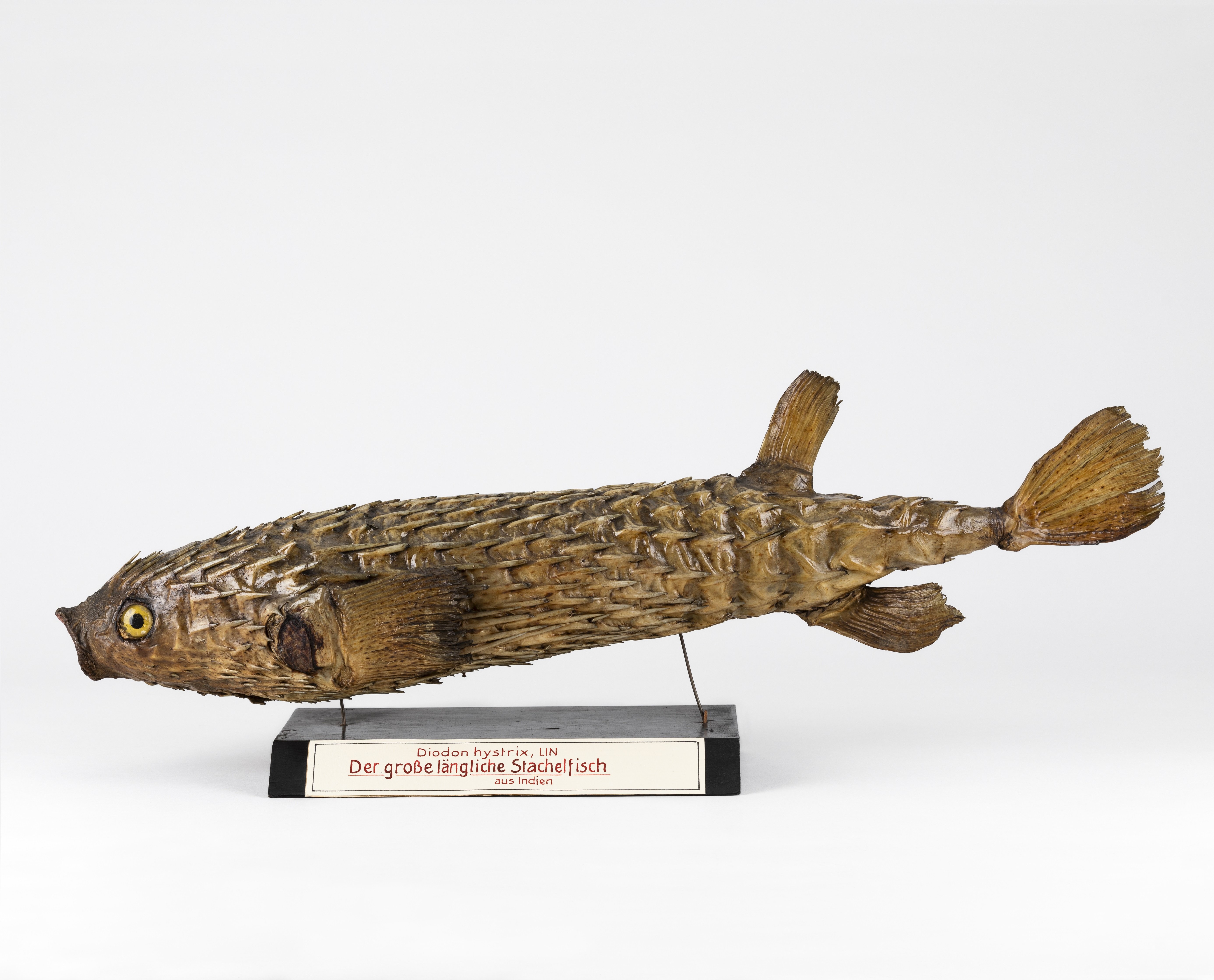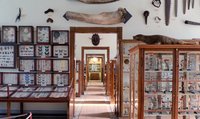Trockenpräparat eines sogenannten Stachelfisch (Diodon hystrix LIN.), das vermutlich aus der barocken Linck-Sammlung stammt. Das Präparat weist auf der Schauseite mit dem Kopf nach links und hat das Maul kreisrund geöffnet, der Körper ist überzogen mit feinen, dünnen Stacheln. Linck d. J. bezog sich bei seinem Eintrag zu dem Präparat auf die zoologische Systematik des Carl von Linné und die wissenschaftliche Diskussion in den Publikationen des Naturforschers Philipp Ludwig Statius Müller (1725-1776).
Das glänzende Äußere des Präparats ist auf den Überzug mit Lacken zurückzuführen, die Glasaugen mit grünlich-gelber Iris wurden etwa im letzten Drittel des 19. Jahrhunderts ausgetauscht.
Linck-Sammlung, belegt im Linck-Index I (1783), S. 59, Nr. 76: "Diodon hystrix LIN. Der große längliche Stachelfisch aus Indien (trocken aufgeh. No 76)"
en

